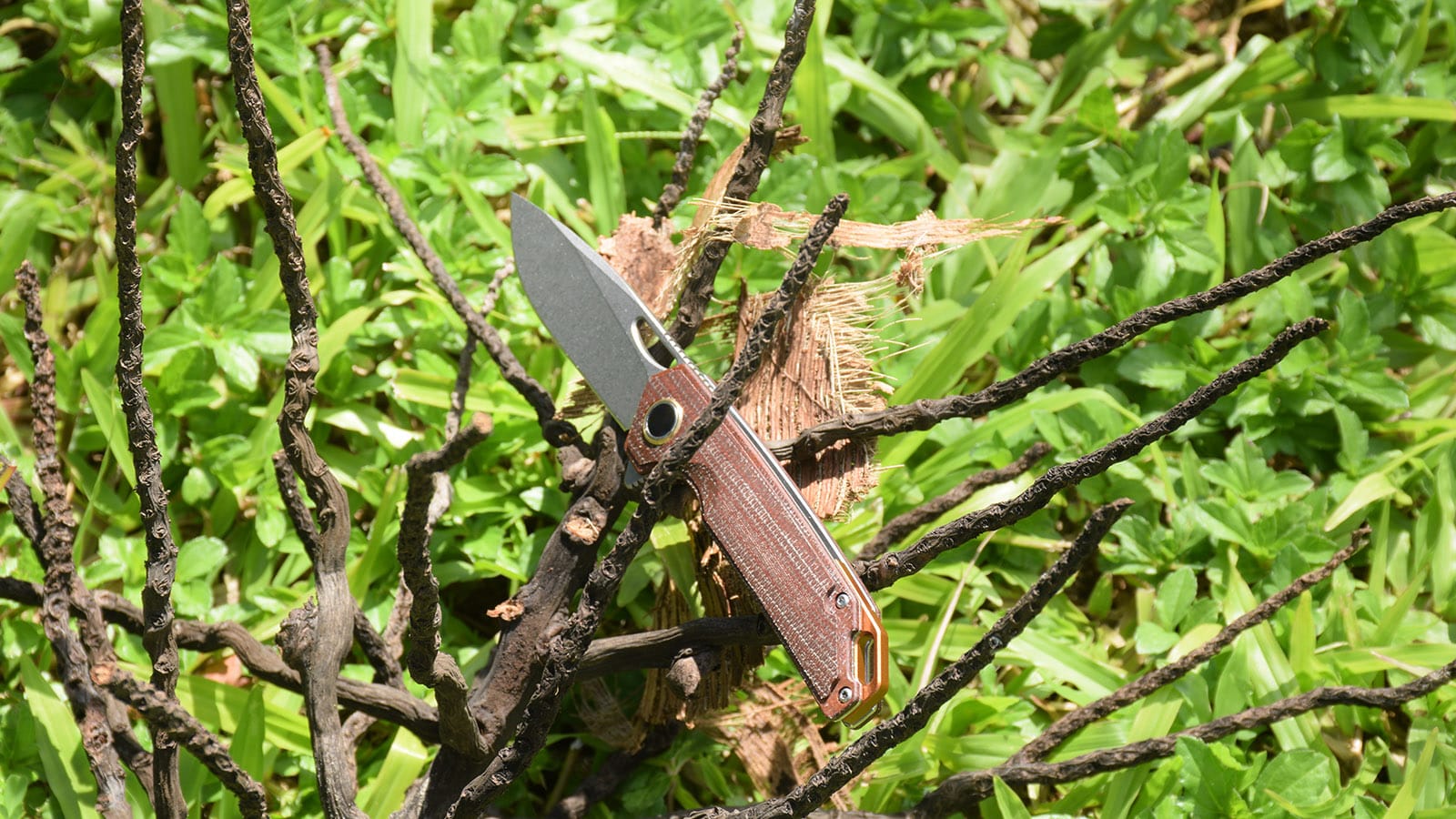Você está cansado de lutar com um canivete cego? Não deixe que a falta de um amolador adequado o impeça! Neste guia abrangente, exploraremos maneiras engenhosas de afiar seu canivete usando itens do dia a dia. Esteja você no deserto ou simplesmente não tenha um amolador à mão, essas técnicas ajudarão você a manter um fio afiado em sua lâmina confiável. Continue lendo para descobrir os segredos de manter seu canivete em ótimas condições, não importa onde você esteja!
Por que um canivete afiado é essencial?
Antes de mergulharmos nas técnicas de afiação, vamos entender por que manter uma lâmina afiada em sua canivete é crucial:
- Segurança: Uma faca afiada requer menos força para cortar, reduzindo o risco de acidentes.
- Eficiência: Lâminas afiadas tornam as tarefas de corte mais fáceis e rápidas.
- Longevidade: a manutenção regular prolonga a vida útil da sua faca.
- Versatilidade: uma faca bem conservada está pronta para qualquer tarefa, do uso diário a situações de emergência.
Agora que sabemos a importância de uma lâmina afiada, vamos explorar como conseguir isso sem um amolador tradicional.
O que posso usar para afiar minha faca se não tiver um amolador?
Você ficará surpreso ao saber que muitos itens domésticos comuns podem ser usados como apontadores improvisados. Aqui estão algumas alternativas criativas:
- Canecas de cerâmica
- Lixa
- Janelas de carro
- Cintos de couro
- Outra faca
- Lixas de unha
- Rochas ou superfícies de concreto
Vamos nos aprofundar em cada um desses métodos e aprender como usá-los de forma eficaz.
Como posso afiar meu canivete com uma caneca de cerâmica?
Um dos métodos DIY mais acessíveis para afiar uma faca é usar uma caneca de cerâmica. Veja como fazer:
- Encontre uma caneca de cerâmica não esmaltada ou vire-a para usar a borda inferior não esmaltada.
- Segure a faca em um ângulo de 20 graus em relação à superfície áspera da caneca.
- Passe a lâmina sobre a cerâmica em movimentos de corte, do calcanhar até a ponta.
- Repita esse processo de 10 a 15 vezes em cada lado da lâmina.
- Alterne os lados para garantir uma afiação uniforme.
A natureza abrasiva da cerâmica não vitrificada age como uma pedra de amolar de grão fino, removendo pequenas quantidades de metal para criar uma borda afiada. Este método é particularmente eficaz para facas dobráveis com lâminas menores.
É possível usar lixa para afiar uma faca?
Absolutamente! Lixa pode ser um excelente substituto para uma pedra de amolar. Veja como usá-la:
- Reúna lixas de diferentes grãos (comece com 220, depois passe para 400, 600 e 1000).
- Fixe a lixa em uma superfície plana.
- Segure a faca em um ângulo constante (cerca de 20 graus) e passe-a sobre a lixa.
- Comece com a granulação mais grossa e vá aumentando para as mais finas.
- Use pressão leve e mantenha o ângulo durante todo o processo.
- Finalize com a lixa mais fina para polir a borda.
Este método permite que você replique o processo de afiação progressiva de uma pedra de amolar, resultando em uma lâmina extremamente afiada. canivete.
É possível afiar uma faca na janela do carro?
Embora possa soar pouco convencional, uma janela de carro pode, de fato, ser usada para afiar uma faca em uma emergência. Veja como:
- Abra um pouco a janela do carro para expor a borda superior.
- Segure a faca em um ângulo de 20 graus em relação à borda exposta.
- Passe a lâmina ao longo da borda da janela, do calcanhar até a ponta.
- Repita de 10 a 15 vezes em cada lado da lâmina.
- Seja cauteloso e gentil para não danificar a janela ou a faca.
A granulação fina da borda da janela do carro pode ajudar a afiar sua lâmina, tornando-a uma opção útil quando você está em movimento. No entanto, esse método deve ser usado com moderação para evitar danos potenciais ao seu veículo.
Como posso usar um cinto de couro para afiar minha faca?
Cintos de couro podem servir como excelentes tirantes para manter e refinar o fio da sua faca. Veja como usar um:
- Prenda o cinto de couro em uma superfície plana ou segure-o esticado.
- Segure a faca com o fio voltado para longe da direção do cinto.
- Passe a lâmina ao longo do couro em um ângulo de 15 a 20 graus.
- Use pressão leve e mantenha ângulo e velocidade consistentes.
- Repita de 10 a 15 vezes em cada lado da lâmina.
Este método é particularmente eficaz para afiar e polir uma lâmina já afiada, semelhante a como um barbeiro afia uma navalha. É uma excelente maneira de manter seu Faca EDC entre afiações mais completas.
Posso afiar uma faca com outra faca?
Em situações de sobrevivência ou quando não há outras opções disponíveis, você pode usar uma faca para afiar outra. Veja como:
- Escolha uma faca com um aço mais duro do que aquele que você está afiando.
- Segure a faca cega firmemente em um ângulo de 20 graus.
- Use a parte dorsal (a lâmina não cortante) da faca mais dura como um aço improvisado.
- Desenhe a lombada ao longo da lâmina da faca cega, do calcanhar até a ponta.
- Repita de 10 a 15 vezes de cada lado, mantendo ângulo e pressão consistentes.
Este método requer técnica cuidadosa para evitar danificar qualquer uma das facas. É melhor usá-lo como último recurso quando não há outras opções de afiação disponíveis.
Quão eficazes são as limas de unha para afiar facas?
Lixas de unha, particularmente as de metal, podem ser surpreendentemente eficazes para afiar facas. Veja como usá-las:
- Escolha uma lixa de unha de metal com granulação fina.
- Segure a faca em um ângulo de 20 graus em relação à lixa de unha.
- Passe a lâmina sobre a lima em um movimento de corte.
- Mantenha ângulo e pressão consistentes durante todo o exercício.
- Repita de 10 a 15 vezes em cada lado da lâmina.
Embora não sejam ideais para afiação pesada, as lixas de unha podem ser ótimas para retoques e manutenção canivete vantagem quando você estiver em apuros.

Uma faca de bolso afiada de aço inoxidável 8cr13mov com cabo G10
Pedras naturais podem ser usadas para afiar facas?
Absolutamente! Pedras naturais têm sido usadas há séculos para afiar lâminas. Veja como usá-las:
- Encontre uma pedra lisa e plana (pedras de rio funcionam bem).
- Molhe a pedra para ajudar no processo de afiação.
- Segure a faca em um ângulo constante de 20 graus em relação à pedra.
- Passe a lâmina sobre a pedra em movimentos circulares ou de vai e vem.
- Alterne os lados a cada 5 a 10 passadas para garantir uma afiação uniforme.
- Prossiga para pedras mais lisas ou áreas da rocha para afiação final.
Este método requer prática para manter um ângulo consistente, mas pode ser altamente eficaz, especialmente em situações ao ar livre, onde não há apontadores comerciais disponíveis.
Quais são alguns métodos de afiação "faça você mesmo" para entusiastas de atividades ao ar livre?
Para entusiastas de atividades ao ar livre e campistas, há várias maneiras criativas de afiar sua faca na natureza:
- Use a borda áspera de uma caneca de cerâmica do seu equipamento de acampamento.
- Encontre uma pedra lisa de rio e use-a como pedra de amolar natural.
- Use a parte inferior de outro prato ou tigela de cerâmica.
- Utilize a borda áspera da janela de um carro (se você estiver acampando).
- Prenda a lâmina em um cinto de couro ou bota.
Esses métodos podem ajudar a manter sua faca afiada durante viagens longas ao ar livre, garantindo que sua lâmina esteja sempre pronta para tarefas no acampamento.
Como posso manter o fio da minha faca entre as afiações?
Manter o fio da sua faca é tão importante quanto afiá-la. Aqui estão algumas dicas:
- Use uma ferramenta de afiação regularmente para realinhar a lâmina.
- Passe a lâmina no couro após cada uso.
- Guarde sua faca adequadamente para proteger o fio.
- Use tábuas de corte adequadas ao seu tipo de lâmina.
- Limpe e seque sua faca após cada uso para evitar corrosão.
Seguindo essas práticas de manutenção, você pode estender o tempo entre as afiações completas e manter sua canivete em ótimas condições.
Que precauções de segurança devo tomar ao afiar uma faca?
A segurança deve ser sempre sua maior prioridade ao afiar facas. Siga estas precauções:
- Sempre corte longe do seu corpo.
- Use luvas resistentes a cortes, se disponíveis.
- Trabalhe em uma área bem iluminada com uma superfície estável.
- Não tenha pressa e não apresse o processo.
- Seja extremamente cauteloso ao usar métodos de afiação não convencionais.
- Mantenha suprimentos de primeiros socorros por perto em caso de acidentes.
Lembre-se, uma faca afiada é mais segura do que uma cega, mas o processo de afiação em si requer cuidado e atenção. Concluindo, manter o fio afiado do seu canivete nem sempre requer ferramentas especializadas. Com esses métodos criativos e um pouco de prática, você pode manter sua lâmina em excelentes condições, não importa onde esteja. Lembre-se de priorizar a segurança e levar o seu tempo para obter os melhores resultados. Aqui está um rápido resumo dos pontos-chave a serem lembrados:
- Itens domésticos comuns, como canecas de cerâmica, lixas e cintos de couro, podem ser usados para afiar.
- Mantenha um ângulo consistente (geralmente em torno de 20 graus) ao afiar.
- Progrida de abrasivos mais grossos para mais finos para obter o melhor fio.
- A manutenção regular, incluindo afiação e polimento, pode estender o tempo entre afiações completas.
- Sempre priorize a segurança ao trabalhar com facas.
- Pratique essas técnicas para melhorar suas habilidades de afiação ao longo do tempo.
Ao dominar essas técnicas, você garantirá que seu canivete está sempre pronto para a ação, seja para lidar com tarefas cotidianas ou encarar aventuras ao ar livre. Mantenha seu fio afiado, e sua faca nunca o deixará na mão!




